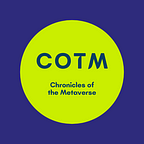Science Fiction as Virtual Fly Through
The 7th of 10 articles argues that, rather than predicting technology, science fiction plays an influential role in its design.
The previous section discussed how science fiction imagines a future that others might be inspired to make real. This inspiration comes from science fiction’s ability to create a coherent future full of cool things.
Science fiction presents the future as a blank piece of paper and outlines the possibilities. It takes tomorrow from the control of prophets, gods and nature and brings it under control of human imagination. Science fiction forms a modern understanding of the future as something to be conceived and designed.
As David Gerrold points out, science fiction matters because it shows we have “the responsibility to design our future.”
This section looks at how science fiction serves as an initial step in this design process, functioning as ‘a virtual fly-though’ for potential technology.
It is a tribute to Kubrick’s aesthetic genius that, more than half a century later, A Space Odyssey still demonstrates how the design of technology can shape our daily lives.
A Space Odyssey showed screens slim enough to be our primary interface for interacting with the world. They are on the back of seats for in-flight entertainment, form digital displays in cockpits and hang like paintings on interior walls.
In the opening sequence astronauts watch the BBC on flat-screen ‘Newspads,’ while appearing to eat plant-based protein. (When Apple claimed Sansung’s handheld tablets infringed the iPad’s patented design and interface, Samsung showed this scene in court, arguing the ‘Newspad’ in 2001: A Space Odyssey was an example of ‘prior art’.)
Scenes like this, and the movie’s detailed exploration of voice-activated technology and artificial intelligence show a remarkably coherent vision for the interactions we now have in our own homes.
As Stephen Wolfram notes, “after Wolfram|Alpha was integrated with voice input and voice output in things like Siri, it started to seem in many ways quite HAL-like.”
Moreover, the use of computers to make video calls in A Space Odyssey and other movies served as the virtual fly through that eased the real-world shift to on-screen communication.
No science fiction has showcased the possibilities of the future to as many people as Star Trek. Its set and prop design team has had a huge influence on human-machine interaction.
The classic 1970s Star Trek’s communicators inspired Motorola’s cell phone research. The original crew also operated “electronic clipboards” with attached stylus. These were renamed PADDs for the Next Generation and, according to the show’s designers, updated “to make them sleeker, slimmer” and to utilise the “networking capabilities we had postulated for the ship.”
It was Data accessing music files on the ship’s computer that inspired Steve Perlman to develop Apple’s QuickTime. Perlman says of The Next Generation, “these guys were dreaming of stuff that wasn’t obvious and showing how it could be used.”
Star Trek continues to influence. The Enterprise’s ‘replicators’ inspired research into 3D printing at the University of California. While, because he travelled back to the 1980s, Scotty has assisted the development of transparent aluminium.
For many innovators Snow Crash has proven as influential as Star Trek. Stephenson may have been just making shit up, but influential tech figures read Snow Crash, thinking — wouldn’t it be cool to have something like this.
Many innovators have cited Snow Crash as an influence, including Sergey Brin, Google Earth designer, Avi Bar-Zeev and former director of Google’s Geo production division, John Hanke.
Stephenson has also worked directly with tech companies. He conributed to an audio drama in his role as chief futurist at startup Magic Leap.
Stepehenson has also worked for Blue Origin, an organisation inspired by science fiction. As a child Jeff Bezos was an avid reader of Isaac Asimov and, it is claimed, views Amazon as a means to fund adventures in space.
Though Wells described his work as human ecology, were he working today, it is not difficult to imagine that he, like Stephenson, would be commissioned to write design fiction. Taking the lead from Kubrick and Clarke, companies, such as Apple, Microsoft, Google and Tesla, employ writers to create design fiction.
According to Graham, design fiction “takes an object, or idea, and examines its potential, its pitfalls, and its possible applications and future development, by creating a full narrative world around it.” By placing a potential product, system or service in a coherent world, design fiction allows organisations fuller insights than traditional, data forecasting. Writing design fiction, argues the author Cory Doctorow, serves the same purpose as “an architect creating a virtual fly-through of a building.”
Science fiction creates an immersive experience of potential technology. Neuromancer showed readers how technologies, being developed in the 1980s, could permeate society and change, not just the way people acted, but the way they thought. It is this quality David Barr Kirtley is referring to when he states:
“More than any other science fiction book that I can think of, Neuromancer conveys what the future is going to feel like.”
Gibson, argues Kevin Featherly, created “in Neuromancer a near-future world permeated internally and externally by technologies that were already in existence in 1984, even if many were not fully developed then (or today).”
Stephenson did not predict Google Earth, avatars or virtual reality headsets, but, like Gibson, by creating a coherent setting for these concepts, the novel encouraged readers to explore the possibilities of their use. In this way he showed us a world we could inhabit if we wanted to create it. As Bijan Sabet declared in 2013 — “We are living in Neal Stephenson’s story”.
